PAY-AS-YOU-GO
Today, In the world there are 1,2 billion people without access to the power grid and other millions do have access to the grid but cannot afford it. As a result, they have to look for other energy sources like fossil fuels, biomass and illegal connection to the grid, ending up being more expensive and unsafe.
As a solution from the private and public sector, appeared Pay-As-You-Go systems that operates in different ways (rent to own or energy service) but the main objective is to offer prepaid energy to guarantee a minimum access to energy at an affordable price for millions of people. Every year people using this system is added to the statistics improving their living conditions and actually well adopting this devices making like this PAYG business a growing market. But as any business model it has some challenges that it may overcome like finance, supplier structures, competition among others.
Despite all the environmental (decreasing of the CO2 emissions), economic (savings in kerosene and mobile charging up to $258 millions between Africa and Asia) and social benefits (reduction in the health issues and death due to pollutant energy sources) that they have brought it is important to questions 4 global things: The role of governments in expanding energy access, the capacity of the PAYG solar systems to respond to every time higher demands, management of the private information of the consumers and finally the environmental impact of these millions of electronic devices considering their use lifetime of approx. 3 years (production and disposals).
Energy Poverty in Europe: Measures and Policies
Energy poverty in Europe has augmented over the past decade, with a huge 54 million European citizens[1] spending in excess of 10% of their income on energy bills. The map below shows the distribution of households across Europe that were unable to keep their home adequately heated in 2013, to the World Health Organizations recommended household temperature of 21°C. The south east of Europe has been significantly affected by energy poverty, with countries such as Turkey, Bulgaria and Lithuania showing over 30% of their populations living in energy poverty, and Italy and Greece presenting figures of over 20% of the total population unable to maintain a satisfactory household temperature
Many measures and policies have been put in place across Europe in order to provide assistance to vulnerable customers, either considered to be in energy poverty or on its cusp. They can be grouped into four main categories; Energy Efficiency Measures, Information and awareness campaign, Financial interventions and Additional consumer protection methods.
I believe the most efficient measures to protect and support households falling into energy poverty are those which make a long-term impact rather than acting as a temporary dressing for the problem, this can include multi-tiered approaches looking at financial support coupled with awareness campaigns and efficiency measures. For instance, Italy provided 95% of its population with electricity smart meters, with a driver from the government for gas companies to follow suit[3]. This country-wide coverage of smart meters will allow policy makers to have a detailed set of analysis on minimum energy requirements and to monitor energy consumption, especially in households of vulnerable consumers.
References
[1] INSIGHT_E “Energy poverty and vulnerable consumers in the energy sector across the EU” Page 22, https://ec.europa.eu/energy/sites/ener/files/documents/INSIGHT_E_Energy%20Poverty%20-%20Main%20Report_FINAL.pdf, accessed 03/01/2017
[2] BBC (2013), “Energy bills: Who pays the most in Europe?” http://www.bbc.com/news/business-25200808, accessed 03/01/2017
[3] INSIGHT_E “Energy poverty and vulnerable consumers in the energy sector across the EU” Page 56, https://ec.europa.eu/energy/sites/ener/files/documents/INSIGHT_E_Energy%20Poverty%20-%20Main%20Report_FINAL.pdf, accessed 03/01/2017
Productive Uses of Thermal Energy
Sustainable Development Goal #7 is to “ensure access to affordable, reliable, sustainable and modern energy for all”1. One energy type that can contribute to this sustainable development goal is thermal energy – energy from the burning of biomass or solar energy – and it often gets overlooked by governments and donors because burning biomass can be perceived as unclean. Many people in rural areas have very limited access or no access at all to the energy grids, making thermal energy even more important, and the key to spurring economic development in those areas.
Energy access helps spur economic growth when energy projects are focused on promoting productive uses of energy. Many energy projects focus on providing new technologies to micro, small and medium enterprises (MSMEs), which can ultimately act as a leader to transition other parts of the community to new and improved technologies.
Productive Uses of Thermal Energy: Old vs. Improved Technologies
Productive uses of thermal energy include but are not limited to: cooking, drying, heating, smoking, baking, water heating, cooling and manufacturing. New and efficient technologies exist that significantly reduce the amount of biomass needed for fuel. There are also thermal energy technologies that feature solar energy, which is much cleaner and more sustainable.
The older technologies for cooking, baking and water heating include traditional stoves, three-stone fires, and inefficient ovens. Burning of wood and biomass in traditional cook stoves releases black carbon and carbon dioxide, which is harmful for the environment. Cutting down more wood due to inefficient burning leads to deforestation and erosion. Traditional cooking also contributes to 4 million premature deaths annually4 due to smoke exposure. Traditional crop drying methods include open air drying, which can lead to contamination of the crops, and lower the quality of the crops due to uneven and inconsistent drying.
Improved thermal technologies feature enclosed compartments for the burning of biomass, which means less biomass is needed to create energy, therefore reducing overhead costs and resulting in environmental benefits. Controlled heating in stoves and driers also results in health benefits as there is less smoke exposure, and increases quality of crops through even drying with no contamination. Less time needed to perform tasks results in more free time that can be used to increase production, ultimately leading to increased economic benefit.
Success Factors for New Thermal Energy Projects in Developing Communities
Local Economic Context
It is important to understand the local economic context of a community before trying to introduce improved thermal energy technologies; otherwise, the new energy system will not be successful. While improved productive energy use can spur economic growth, it is not the only factor that contributes to development, so other factors must be considered and accounted for when planning energy programs:
- Availability of inputs for products
- Qualifications and skill of the local workforce – is traning required?
- Infrastructure conditions and local government barriers
- Financing opportunities
- Accessible markets for the sale of final products
Marketing and Awareness
Without creating awareness that an improved thermal energy technology could benefit MSMEs and local communities, the technology will not be adopted. There are many barriers such as local customs, oral history, harvesting rituals and perceived risk of change that will prevent communities to adopt new and improved technologies. Habits are not easily changed, so communication strategies must state incentives, such as increased incomes, reduced overheads, more free time, or other valuable aspects to the community. Programs must listen to the communities they are trying to help and tailor communication to address real needs in order to create a successful marketing campaigns.
Business Development
When implementing new and improved energy systems for a MSME, the energy project should dedicate some resources to help MSME entrepreneurs build business plans so their businesses can sustain themselves and grow after the energy project is complete. Business plans can also help raise additional capital, so MSMEs can expand and create further economic activity.
Conclusion
I believe productive uses of thermal energies are key to achieving Sustainable Development Goal #7 when the energies are efficient and incorporate new technologies such as solar. It is difficult to extend energy grids to many rural and hard to reach areas in developing countries, so thermal energies provide a stand-alone solution to energy access. Even with more efficient technologies, natural resources used for biomass must be managed in a sustainable way. Energy implementation programs must fully understand and respect the communities they are trying to help, and empower the communities to continue with improved technologies once energy implementations are complete. If implemented correctly, improved thermal energies reduce health risk, cause less of an impact on the environment, and can spur economic development.
Sources
- United Nations (2016): Sustainable Development Goals, Goal 7: Affordable and Clean Energy, http://www.un.org/sustainabledevelopment/energy/
- International Energy Agency (2011): Energy for All – Financing Access for the Poor. Special early excerpt of the World Energy Outlook 2011. Updated estimates of the OECD/IEA 2010, http://www.iea.org/media/weowebsite/energydevelopment/presentation_oslo_oct11.pdf
- Practical Action (2012): Poor People’s Energy Outlook 2012: Energy for Earning a Living. Rugby, UK, http://practicalaction.org/ppeo2012
- Brüderle, Anna; Diembeck, Katja; Hartmann, Johanna; Rammelt, Monika and Volkmer, Heike (2014): Productive Use of Thermal Energy, An Overview of Technology Options and Approaches
Energy access in humanitarian settings
| Clean energy access for efficient cook stoves and clean fuels for cooking are NEEDED |
Energy access in humanitarian settings is one of the most problematic issues that governments and humanitarian organisations are facing nowadays.
Electricity for lighting, communicating, and powering essential equipment is needed in humanitarian settings. Fuel-efficient cookstoves and cleaner fuels are also needed to improve respiratory health, help to protect women from the dangers they face when collecting firewood from unsafe locations, and enhance nutrition by ensuring families don’t have to exchange half their food ration for cooking fuel.
In 2015, 65.3 million people, were forced to abandon their homes and they leave with few possessions and in fear of their and they have been affected by this crisis, having to rely on three-stone fires and traditional fuels such as wood, animal dung, and agricultural waste for cooking, which negatively impacts their health, food security, safety, and the environment.
Nearly 3 billion people in the developing world cook food and heat their homes with traditional cookstoves or open fires, resulting in negative impacts like:
- Environmental: use of solid fuels and rudimentary cookstoves can cause serious environmental problems that can be irreversible and irremediable
- Health: Daily exposure to toxic smoke from traditional cooking practices is one of the world’s biggest – but least well-known killers
- Women and gender: When they leave the safety of their communities to search for firewood and other traditional biomass fuels, they’re at increased risk of gender-based violence besides the time that they have to spend ding this avoid them to do other chores like studying, working, etc. Besides women and children suffer from the exposition to the harmful gases.
Traditional cooking fires are one of today’s biggest environmental threats to human life and a shortage of fuel for cooking is one of the many problems faced by people in the developing world.
We need to act now to fix this problem and be able to get a clean energy access in humanitarian settings and faced one of today’s biggest environmental problems and threats to human life as it traditional cook stoves and a shortage of fuel for cooking
ENERGY ACCESS IN HUMANITARIAN SETTINGS
The total number of refugees in the world has increased for the fifth consecutive year to 65.3 million, reaching an increase of the 55% in the last four years. 51% of these are children. And 53% of forced displaced people come from these three countries: Syria, Afghanistan and Somalia.
Energy is used for cooking, lighting, heating and powering. Its access is crucial, but also its efficiency and security have to be addressed by emergency aid organizations and international institutions in their action plans.
Sustainable and efficient energy supply has to be addressed for three main reasons:
- Firewood collection entails security problems for women and children who have to walk large distances at the risk of being attacked or raped.
- There are also significant negative health consequences, with risk of burns, respiratory issues and uncontrolled fires.
- The environmental degradation can be irreversible.
A good solution to all this problems could be provided by improved cookstoves, which can reduce the exposure to violence women and children face, the health problems with the risk of burns, respiratory issues and fires and finally the environmental degradation.
To sum up, it can be affirmed that sustainable energy supply has to be addressed in the humanitarian crisis we are currently living because consequences can be dramatic not only for human beings (especially for women and children) but also for the whole ecosystem.
Financing for Energy Access: A collaborative Solution.
The lack of quality access to energy and have been consider as one of the biggest issues that the human development have to address in our days, affecting around 20% of the global population in some of its forms (1), polluting and damaging the environment and people that suffer it and affecting moreover the whole economy of the country, the sanitary system or the quality education. This implies the entrance in a circle of poverty that is difficult to go out. In the majority of the cases people is paying a lot of money for their own contamination.
Many have been the models and aids that have tried to solve these issues, but problems that have appeared in each. Some years ago, microcredits appeared as the best solution to facilitate access to credit to the poorest societies in order obtain quality energy, but the excessive indebtedness of the borrowers and abusive practice by some big lender institutions (2), made from some of these credits a sentence instead of the salvation that were supposed to be.
Through the use of the collaborative economy applied to development have resulted new forms of actuation, like the microcredit crowdfunding platform created by Access To Energy, that looks for overcome the previous problems by the empowerment of the local community and institutions with the energy access, engage people and private sector from developed countries for the improvement of rural and poor communities with the goal to reduce inequality.
Bibliography
1. De La Vega Navarro, Angel. El acceso a la energía. Le encyclopedie de l´energie. [En línea] 2015. http://encyclopedie-energie.org/articles/el-acceso-la-energ%C3%ADa.
2. Heinemann, Tom. Microcréditos. Documento Tv, 2012.
3. Access to Energy ORG. Access to Energy . Babyloan. [Online] http://www.access-to-energy.org/en/the-microentrepreneur#Does the micro-entrepreneur pay interest on the loan provided?.
Alejandro Rodríguez Bolaños
Solar pumping impact
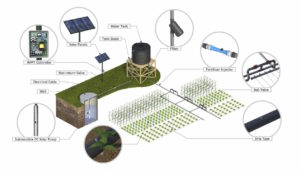
Water pumping scheme developed by SunCulture .
Solar pumping’s most evident impact on development is an amazing optimization of farming. Starting with the possibility of growing more, better, using less resources, and ending with the reduction of some historic ecological impacts, like the use of fossil fuels.
Nevertheless, this new technologies bring new threats when not managed responsibly. Like the over-exploitation of aquifers of the contamination of land with salts and other elements lying underground.
Moreover, solar pumping stands as an invaluable opportunity to channel efforts into cross-sector improvements to developing countries quality of life. This not only includes the improvement on the quality and quantity of food and the increase of family incomes, but also refers to the development of financial and communication organizations in reduced populations.
The true potential of solar pumping (and renewable energies in general) lies in the possibility of organizing communities towards a common goal, the possibility of empowering people to take decisions to improve the life of their families and the possibility of to increase awareness on the way their ecosystems work, so that they take better care of the environment.
From a macro-economic point of view, profit and market share lead the main concern in the current economic system. The world needs a new paradigm that considers a broader spectrum of priorities and actors if it wants to become more inclusive and sustainable. It is up to the new organizations, start-ups and projects to lead this change.
The need of a paradigm shift towards sustainable energy access projects
Between 1990 and 2010, the number of people with access to electricity has increased by 1.7 billion.[1] In 2016 an estimated 1.2 billion people did not have access to electricity which is 15 million fewer than reported in the previous year.[2] As the numbers show, energy access is increasing a lot. With the continues growth of the global population, sustainable energy access for all is an increasingly challenging task. With fossil fuels still dominating the energy supply, the acceleration of energy access causes climate problems. Ensuring universal access to affordable and sustainable energy access (SDG7) means investing in clean energy sources. Photovoltaics (PV) seems suited for providing clean energy to rural areas in developing countries where general electricity access is still too difficult.
Over the last 50 years, the total amount of foreign aid was over $2.3 trillion US dollars. However, a lack of theoretical consensus surrounding the effectiveness of foreign aid remains.[3] Why do for example PV projects fail? Mostly, because of a lack of thorough research, management and planning. As a result, an overall lack of a long-term vision. The first steps are taking place towards a paradigm shift from just implementing PV systems to a more holistic approach with taking the long term operation into account. But the shift is still not fully complete. Still too often projects fail. It is essential to take into account that it is not just energy access itself that will help the poor. The PV market at the bottom of the pyramid should be addressed with a lot of attention to organizational frameworks, operational details and post project aspects.
[1] http://www.undp.org/content/undp/en/home/sustainable-development-goals/goal-7-affordable-and-clean-energy.html
[2] http://www.worldenergyoutlook.org/resources/energydevelopment/energyaccessdatabase/
[3] http://dri.fas.nyu.edu/docs/IO/12361/WilliamsonRAEAid.pdf
Sowing money
COP22 (22nd Conference of the Parties to the United Nations Framework Convention on Climate Change) was held from November´s 7th to 18th at Marrakesh, and the main goal was to discuss how to implement and regulate the Paris Agreement (COP21) proposals. This last year Climate action event was one of the most international success main UN meetings in several years. It has established unknown precedents on Climate Change negotiations, in which 177 parties finally signed, and compromise themselves to reach the objective of staying below 2°C (if possible 1.5°C) on the earth temperature.
From that date on, 114 parties has already ratified the agreement presenting their INDC (Internal nationally determined contribution). At least 80% of the submitted plans are on agriculture mitigation action, and 64% on agriculture adaptation action. Having considered these priorities from the parties, there is a “clear increasing recognition that climate action in agriculture is part of the solution” said the FAO General Director José Graziano da Silva, who also add that it is “an opportunity to tackle climate change WHILE fighting poverty, hunger and malnutrition”.
THE TRACKING PROGRESS FROM COP21
The focused initiatives on low emission agriculture such as ASAP, SAVE FOOD, LIFE BEEF CARBON and 4pour1000 not only demonstrate a big progress on agriculture awareness dimension at COP21, but also have already being taking place during this 2016.
- ASAP (Adaptation for Smallholder Agriculture Programme – Global largest financing source) has increase over 500.000 people that are more resilient to extreme climate weather events and 150.000 hectares managed with climate resilient practices.
- SAVE FOOD (food waste and loss) coordinates efforts to stop food from spoiling across the value chain from farm to fork. Food that goes bad or is wasted represent 8% of the GHG global emissions, but in this current year, the initiative has built capacity to reduce post-harvest loses in 5 countries and is working to ensure a productive, resilient and low emission food system setup.
- LIFE BEEF CARBON (reduce beef carbon footprint from cattle farms) is helping to increase the capacity of reducing GHG emissions and sequestring carbon at lifestock farms. Besides, is also working on demonstrative and pilot finds to benefit the environment and contribute to the economic and social sustainability.
- 4pour1000 (soils for food security and climate) is a multi-stakeholders platform that aims to increase carbon sequestration in soil´s fertility yield with agricultural and forestry sustainable practices. Nowadays intend to bring together funding while strengthening food security. It also support scientific researching programs, reinforce international cooperation and technology transfers, and work in pilot projects and initiative evaluation criteria’s.
LAUNCHED SOLUTIONS at COP22
Besides the four mention projects described, arriving on COP22 three new initiatives that highlight this potential in agricultural adaptation were presented. Morocco got advantage on the meeting to formally launch its Adaptation of African Agriculture initiative, but therefore, Global Framework on Water Scarcity and Milan Urban Food Policy Pact also reach main relevance. The three of them had already initiated before their presentation.
- AFRICAN ADAPTATION INITIATIVE Responds to the needs expressed by African countries. It is built around two major pillars: Advocacy to secure financing for projects of agricultural adaptation in African countries, and Promotion of innovative solutions to respond to Africa’s top priority needs. Besides promoting the financial capacity building, the AAA encourages the implementation of concrete projects such as: Improving Soil Management: Soil Fertility and Crop Fertilisation, Fruit Farming, Rangeland Management, Agroforestry; and Agro-Ecological Innovations and Carbon Sequestration. 2. Agricultural-Water Control and 3. Climate-Risk Management. It has already the active support of 28 African countries, several national and private sector entities, and it is estimated that with smart climate-sensitive agricultural practices, African annual agricultural production could increase from US $280 billion to $880 billion by 2030.
- GLOBAL FRAMEWORK ON WATER SCARCITY support countries in integrating climate action and sustainable water use into policies for their agricultural sectors and cross-sectoral dialogue, implement their national climate action plans, enhance the development of capacity in the climate-water-food-energy nexus, and shares knowledge and experiences with other countries. Several governments and investment-related organizations have recently joined this rapidly growing multi-stakeholder platform. The Global Framework on Water Scarcity came up to support the implementation of the agricultural water management component of the AAA initiative. Because basically, without water, there is no relevant agriculture production.
- MILAN URBAN FOOD POLICY PACT is a commitment of 132 mayors from across the world, calling for sustainable food systems in cities and adapting urban food systems against climate change. This initiative explores measures that would facilitate the transition to and invest in sustainable, climate-resilient and more productive agriculture. About one third of the food produced in the world for human consumption every year—approximately 1.3 billion tonnes—gets lost or wasted. Food losses and waste amounts to roughly $680 billion in industrialised countries and $310 billion in developing countries.
BOTH SIDES OF THE COIN
Smallscale farmers produce 80% of the food consumed in the developing world, yet the paradox is that this is where hunger and poverty is mostly found. Developing countries are the home of around half- billion smallholder farm families who produce food and other agricultural products. So is clearly shown that Agriculture (including forestry and fisheries) is the most threatened and affected sector by the industry, climate change, and inequality. Although at the same time is one of the huge responsible of world’s GHG emissions (producing over 20% to 21%) is not the only, but one if the biggest responsible on fighting against poverty and hunger.
Reducing gas emission, building agricultural resilience, and increasing productivity for farmers, are some ideas of this mitigation/adaptation plan. But, is only under large-scale projects such as re-designing the completely agricultural support policies and incentives, or changing actual agricultural practices to sustainable ones, that real and deep transformations can be carried out.
Investments on infrastructure such as extending irrigation systems to guarantee independent food production from weather and climatological fluctuations, funding and improved access to credit, insurance and other financial services for smallholder farmers, and progressing in science research and education are initiatives that cost much more than the mount of 20.000 to 30.000 million dollars that African Development Bank propose in their last inform.
Bringing FAO´s general director last words at COP22, I just can end this article saying that without action, agriculture will continue to be a major contributor to global greenhouse gas emissions. Adopting climate-smart practices emissions can reduce while stepping up food production to feed the world’s growing population and stop hunger.
Then, let´s start sowing money.
Sources:
REPORTS:
ecdpm.org/cop22-agriculture-africa-and-action
(video: https://www.youtube.com/watch?v=AUgRKLTRRkw)
Food and agriculture organization of the United Nations reports
(http://www.fao.org/home/en/)
Adaptation of Africa Agriculture
http://www.aaainitiative.org/initiative
UN Climate Change Newsroom COP22
http://newsroom.unfccc.int
Agencia Europea de Medio ambiente
http://www.eea.europa.eu/downloads/9952cbf12e2544c5bb3a4549a2f8c3c5/1468248918/la-agricultura-y-el-cambio-climatico.pdf
Newspaper ARTICLES:
https://www.theguardian.com/environment/world-on-a-plate/2016/nov/19/smallscale-farmers-need-the-spotlight-now-africa-food-prize-winner-kanayo-nwanze-speaks-out-at-cop22
http://elpais.com/elpais/2016/10/15/planeta_futuro/1476527682_057265.html
http://elpais.com/elpais/2016/11/16/planeta_futuro/1479328266_041681.html
Gains and Losses: a happy ending for human kind?
A huge gain for climate change combating: the corporate world.
Our economy has been based on capitalism, consumption and money, an economy where there was no room to take on climate change. But nowadays it seems there is a shift taking place. A shift towards a new era of action, approaching climate change and sustainable development, not just by governments but by the corporate world as well. Copp22 has shown an unstoppable global momentum on climate change actions by governments, businesses, investors, sub-regional government and cities.[i]
It is a quite new, interesting and important tendency that for profit organizations and big capitalistic leaders are committed as well to stop climate change. More than 100 high-level business leaders and investors met with leaders from Governments, civil society and the United Nations at Cop22 to show their support and commitment to taking action on the climate agreement developed in Paris last year. [ii] You can say that we are at the beginning of a macro economic shift from profit maximization to an increasing importance of going beyond just focussing on money. Executive Director of the UN Global Compact, Lise Kingo mentioned this tendency during Cop22 as: “The climate movement is unstoppable. More and more companies are taking action, and seeing new opportunities for growth and innovation.”[iii] Climate change has clearly shifted from having a ‘tree hugging’ and not ‘sexy’ image to being at the center of international relations. Last year, 195 countries adopted the Paris Agreement, a binding arrangement that aims to limit global warming to 2 °C.[iv]
More and more business opportunities occur with the growing global acknowledgment of the importance of climate change. As a result, the global community is becoming more and more committed to countering climate change. We can see here an interrelation between the two. Because of climate change more business opportunities appear and because of these business opportunities the needs and resources of countering climate change rapidly increase. Isabelle Kocher underpinned this phenomenon at COP22 by saying: “Affordable solar for all is our best option to tackle emission issues”[v]
It is clear that businesses increasingly commit to climate change prevention. At Cop22 the UN Global Compact and its partners released the 2016 Status Report on the Business Contribution to Global Climate Action, an assessment of the impact of business initiatives on achieving the goals of the Paris Agreement and the Sustainable Development Goals (SDG’s).[vi] Moreover, there was a ‘business and industry day’ during Cop22. The outcomes underline as well the growing commitment of companies. An example of the outcomes: 200 companies representing USD $4.8 trillion in market value and responsible for 627 metric tons of CO2 equivalent emissions per year have committed to set targets aligned with the Paris climate agreement and this number is growing. Amongst these companies are Walmart, Mars Inc. and Sony.[vii]
A terrible loss for climate change combatting: Developing countries
The biggest fail of this year’s climate summit was the unanswered question for finance for developing countries. The $100 billion per year, by 2020, promised by developed countries, in the Paris climate agreement, to help the most vulnerable countries cope with the effects of climate change, has not been implemented.[viii] Until now there is no solution or concrete method in how to implement this highly important aspect of achieving the Paris agreement goals. It is key to the global deal for climate change commitment to provide developing countries with the tools they need to tackle climate change challenges. Moreover, the countries that suffer the most from climate change are developing countries. They need the money to pay the damages climate change causes.
Bangladesh (6th on the CRI) is one of these developing countries that suffers extensively from climate change. I have seen the huge effects of global warming in this country. Villages are over flooded everyday so millions of people are forced to leave their homes and become climate refugees. Most of these refugees flee to the capital Dhaka. This in itself is a huge global warming issue but the problems that come with it are just as horrifying.
What’s next?
Cop22 has shown the great sense of urgency for combating climate change and the commitment amongst all participants, as well as corporations. The fight against climate change is gaining more and more ground. It has become an unstoppable movement and a global top priority. But what has almost been forgotten in the process is the great importance for helping developing countries, the countries that suffer the most climate change.
The highest importance should be addressed to developing a sustainable plan and actually implementing it. Because without having the developing countries on board, the global climate change movement will be a never-ending story. Or the worst scenario will be that the story will end but not with a happy-ending for humankind. Earth will survive, earth has been here for billions of years. So we need to take care of our home, not in the first place for earth itself but for the happy ending of humankind.
Sources
[i]http://unfccc.int/files/meetings/marrakech_nov_2016/application/pdf/marrakech_action_proclamation.pdf
[ii] https://www.unglobalcompact.org/take-action/events/891-cop-22-cmp-12-high-level-meeting-on-climate-change#overview
[iii] https://www.unglobalcompact.org/news/3811-11-14-2016
[iv] http://ec.europa.eu/clima/policies/international/negotiations/paris_en
[v] http://www.engie.com/en/innovation-energy-transition/isabelle-kocher-solarcop-marrakech-terrawatt-initative/
[vi] https://www.unglobalcompact.org/library/4851
[vii] https://www.unglobalcompact.org/docs/news_events/COP22/Business-Events-During-COP22.pdf
[viii] https://www.euractiv.com/section/climate-environment/news/cop22-climate-finance-pushed-back-to-2018/



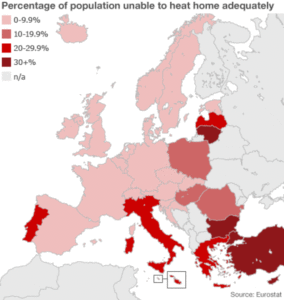
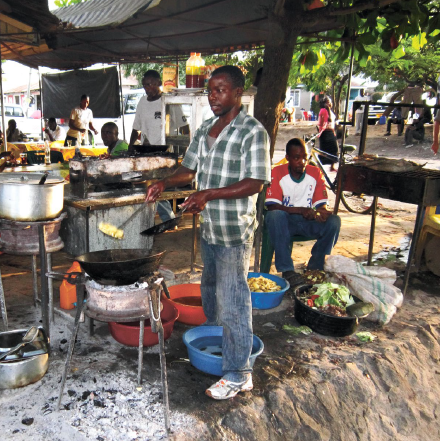
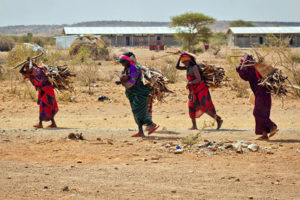
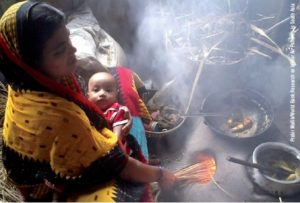
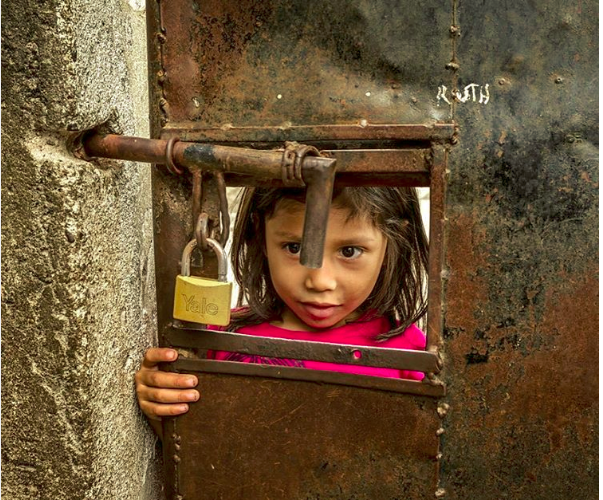
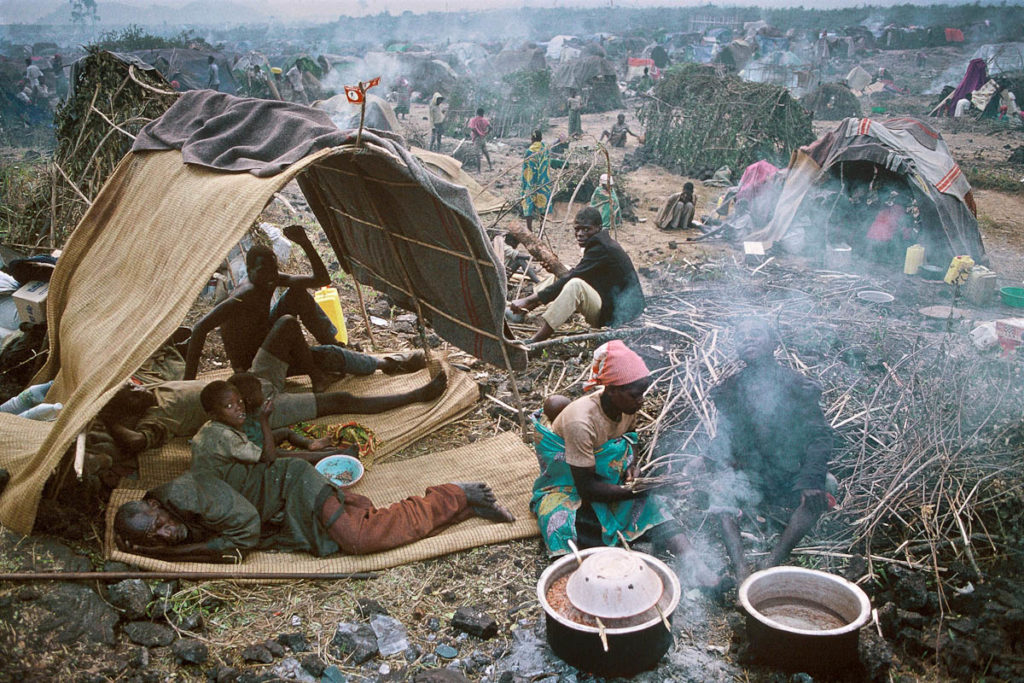
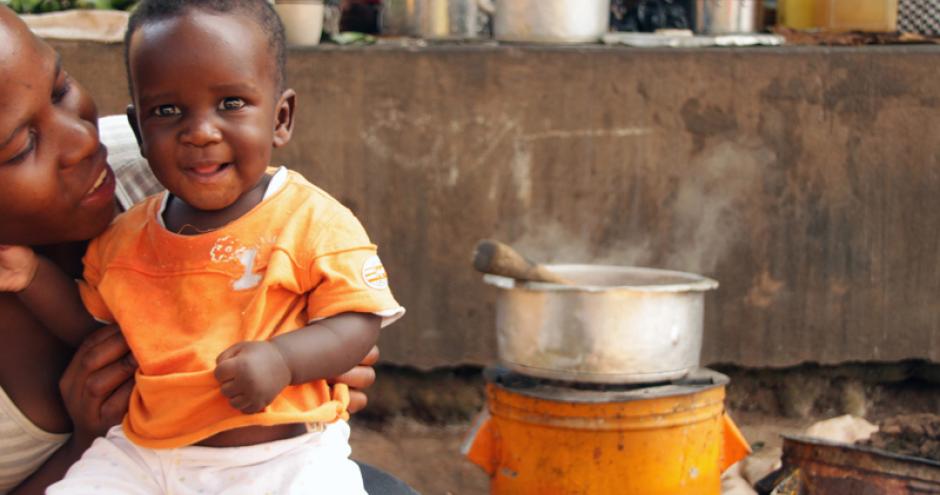


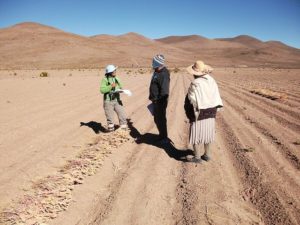
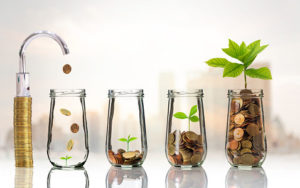
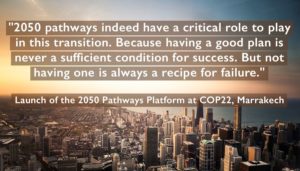
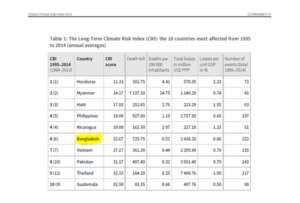

.png)
].gif)
.png)
].png)
].png)
].png)
.png)
].png)
.png)
